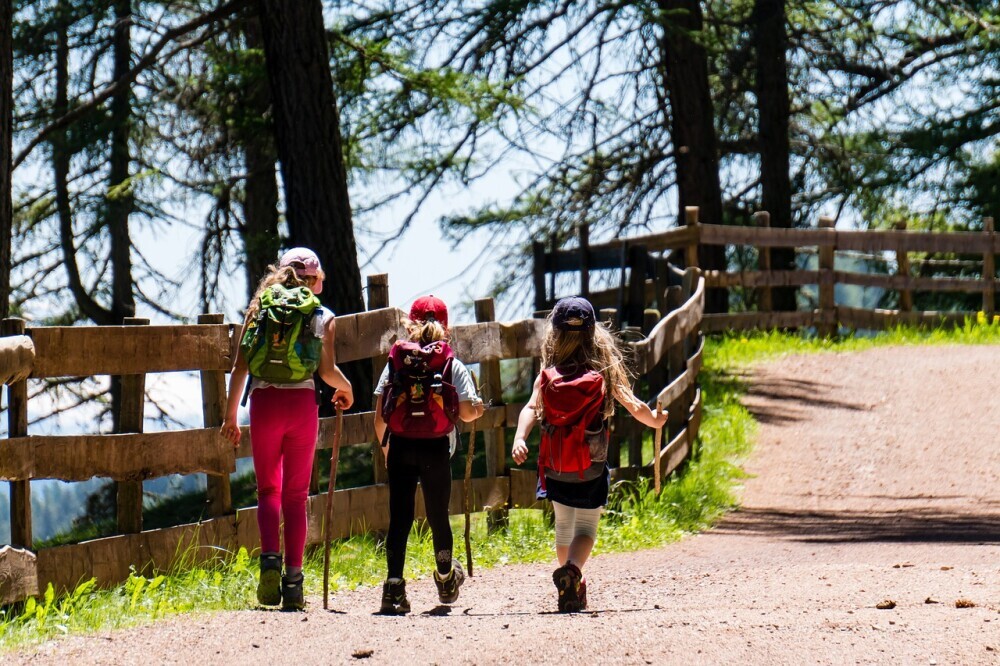
Hiking Etiquette: Dos and Don’ts on the Trail
Hiking is a wonderful way to connect with nature, exercise, and enjoy the great outdoors. However, it’s important to follow proper etiquette to ensure a positive experience for yourself and others. Here are some essential tips for hiking responsibly and respectfully.
Respect the Environment: Trail and Wildlife Considerations
Leave No Trace principles: The Leave No Trace principles are a set of guidelines that help minimize your impact on the environment. These principles include:
- Leave no trace: Pack out everything you pack in, including food scraps and toilet paper.
- Stay on designated paths: Avoid trampling vegetation and disrupting ecosystems.
- Respect wildlife: Observe wildlife from a distance and avoid disturbing their habitat.
- Be considerate of others: Be mindful of your noise level and avoid disturbing other hikers.
Proper waste disposal: Always pack out your trash and dispose of it properly in designated areas. Avoid leaving behind food scraps, cigarette butts, or other litter.
Staying on designated paths: Stick to marked trails to protect fragile ecosystems and avoid damaging vegetation. Wandering off-trail can lead to erosion and habitat destruction.
Wildlife encounters: If you encounter wildlife, observe them from a safe distance and avoid approaching or feeding them. This helps protect both you and the animals.
Understanding noise pollution: Keep noise levels to a minimum to avoid disturbing wildlife and other hikers. Avoid loud music, shouting, or using amplified devices.
Interacting with Other Hikers: Etiquette and Social Norms
Greeting fellow hikers: It’s a common courtesy to greet fellow hikers with a friendly smile and a “hello.” This helps create a positive and welcoming atmosphere on the trail.
Sharing the trail: Right of way rules and passing etiquette: When encountering other hikers on the trail, it’s generally considered polite to yield to hikers going uphill. If you’re going uphill, announce your presence with a friendly “passing on your left” or “passing on your right.”
Handling noisy groups: If you’re hiking with a large group, try to keep noise levels down and be mindful of other hikers. Avoid shouting or playing loud music.
Respecting personal space and privacy in shared areas: Give others their personal space, especially in crowded areas. Avoid crowding people or taking photos without their permission.
Dealing with trail congestion: If you encounter a lot of traffic on the trail, be patient and courteous. Yield to others as needed and avoid blocking the trail.
Preparation and Safety: Ensuring a Smooth Hiking Experience
Essential gear: Pack the essentials for your hike, including:
- Comfortable footwear
- Appropriate clothing for the weather
- Water and snacks
- First-aid kit
- Map and compass (or GPS device)
- Sunscreen and insect repellent
Checking weather conditions and trail updates before heading out: Research the weather forecast and check for any trail closures or advisories before you start your hike.
Hiking with pets: If you’re hiking with a pet, make sure they are well-trained and leashed at all times. Ensure they have plenty of water and are comfortable in the weather conditions.
Emergency planning: What to do if you get lost or injured: Learn basic first aid and carry a whistle or emergency locator device. If you get lost, stay calm and try to retrace your steps.
Understanding your physical limits: Choosing trails that match your skills: Choose trails that are appropriate for your fitness level and experience. Don’t attempt hikes that are too challenging for you.
Preserving the Hiking Community: Advocacy and Involvement
Participating in trail maintenance and conservation efforts: Volunteer your time to help maintain trails and protect natural areas.
Advocating for more trails and funding for park services: Support initiatives to expand trail networks and improve park facilities.
Joining hiking groups: Building a supportive community: Connect with other hikers through local hiking groups and clubs. This can provide opportunities for companionship, support, and learning.
Educating newcomers about hiking etiquette and safety: Share your knowledge and experience with others to help them become responsible and safe hikers.
Supporting local businesses that cater to hikers: Support local businesses that provide services and products for hikers, such as outdoor gear stores, restaurants, and accommodations.
By following these guidelines, you can help preserve the beauty of our natural areas and ensure a positive and enjoyable hiking experience for everyone. Remember, responsible hiking is about respecting the environment, other hikers, and yourself.

